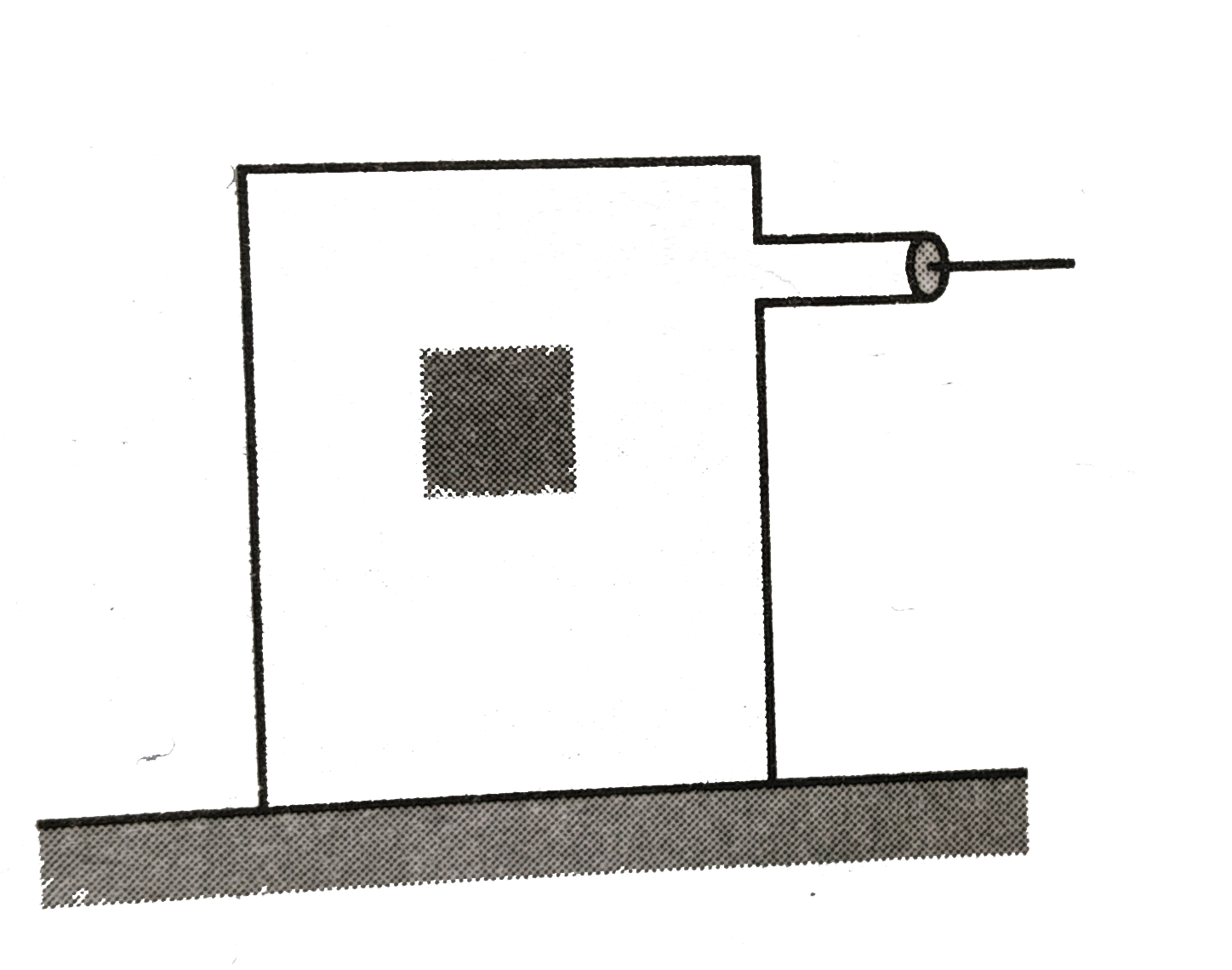A block of wood floats in a bucket of water in a lift. Will the block sink more of less if the lift starts ac celerating up ?
To determine whether the block of wood will sink more or less when the lift accelerates upwards, we can analyze the forces acting on the block of wood in the water.
1. Identify the Forces Acting on the Block:
- The block of wood experiences two main forces:
- The gravitational force (weight) acting downwards, which is given by W=mg (where m is the mass of the block and g is the acceleration due to gravity).
- The buoyant force acting upwards, which is equal to the weight of the water displaced by the submerged part of the block.
2. Understand the Condition for Floating:
- A block floats when the buoyant force is equal to its weight. Mathematically, this is expressed as:
Buoyant Force=Weight of the Block
- This can be expressed as:
ρwaterVdisplacedg=mg
- Where ρwater is the density of water, Vdisplaced is the volume of water displaced, and g is the acceleration due to gravity.
3. Effect of Lift Accelerating Upwards:
- When the lift accelerates upwards with an acceleration A, an additional pseudo force acts on the block in the downward direction. The effective weight of the block becomes:
Weffective=mg+mA
- This means the apparent weight of the block increases due to the upward acceleration of the lift.
4. New Condition for Floating:
- The new condition for the block to float now becomes:
Buoyant Force=Weffective=mg+mA
- Since the buoyant force remains the same (it depends on the volume of water displaced, which does not change immediately), the increased effective weight of the block will cause it to sink more into the water.
5. Conclusion:
- As the lift accelerates upwards, the effective weight of the block increases, leading to a greater downward force. Therefore, the block will sink more into the water compared to when the lift was stationary.
Final Answer:
The block of wood will sink more when the lift starts accelerating upwards.
---
- The block of wood experiences two main forces:
- The gravitational force (weight) acting downwards, which is given by W=mg (where m is the mass of the block and g is the acceleration due to gravity).
- The buoyant force acting upwards, which is equal to the weight of the water displaced by the submerged part of the block.
- A block floats when the buoyant force is equal to its weight. Mathematically, this is expressed as:
Buoyant Force=Weight of the Block
- This can be expressed as:
ρwaterVdisplacedg=mg
- Where ρwater is the density of water, Vdisplaced is the volume of water displaced, and g is the acceleration due to gravity.
- When the lift accelerates upwards with an acceleration A, an additional pseudo force acts on the block in the downward direction. The effective weight of the block becomes:
Weffective=mg+mA
- This means the apparent weight of the block increases due to the upward acceleration of the lift.
- The new condition for the block to float now becomes:
Buoyant Force=Weffective=mg+mA
- Since the buoyant force remains the same (it depends on the volume of water displaced, which does not change immediately), the increased effective weight of the block will cause it to sink more into the water.
- As the lift accelerates upwards, the effective weight of the block increases, leading to a greater downward force. Therefore, the block will sink more into the water compared to when the lift was stationary.
The block of wood will sink more when the lift starts accelerating upwards.
Topper's Solved these Questions
- BOOK - PRADEEPCHAPTER - PROPERTIES OF BULK MATTEREXERCISE - Advanced problems for competitions21videos
PROPERTIES OF BULK MATTER
- BOOK - PRADEEPCHAPTER - PROPERTIES OF BULK MATTEREXERCISE - NCERT Questions73videos
PROPERTIES OF BULK MATTER
- BOOK - PRADEEPCHAPTER - PROPERTIES OF BULK MATTEREXERCISE - Solved Examples159videos
PROPERTIES OF BULK MATTER
- BOOK - PRADEEPCHAPTER - PHYSICAL WORLD AND MEASUREMENTEXERCISE - Competiton Focus Jee Medical Entrance18videos
PHYSICAL WORLD AND MEASUREMENT
- BOOK - PRADEEPCHAPTER - RAY OPTICSEXERCISE - Problem For Practice(a)25videos
RAY OPTICS
Similar Questions
Knowledge Check
- Question 1 - Select One
A block of wood floats in water with 23 of its volume submerged. Its relative density is
A13B23C43D19 - Question 2 - Select One
A small block of wood of relative density 0.5 is submerged in water at a depth of 5 m When the block is released it starts moving upwards, the acceleration of the block is (g=10ms−2)
A5ms−2B10ms−2C7.5ms−2D15ms−2 - Question 3 - Select One
A block of wood is floating on the surface of water in a beaker. The beaker is covered with a bell jar and the air is evacuated. What will happen to the block ?
ASink a littleBRise a littleCRemain unchangedDSink completely
A block of wood floats in water kept in a vessel with two-third of its volume inside water.The vessel is placed in a lift having an upward acceleration 1.2ms2.Now the fraction of volume inside water is found to be 4n. What is the value of n ?
View SolutionA block of wood floats in water two-thirds of its volume submerged. In oil the block of floats with 0.90 of its volume submerged. Find the density of (a) wood and (b) oil, if density of water I 103kg/m3.
View SolutionA block of iron dropped in a vessel of water, sinks to the bottom. This is because:
View SolutionA block of iron dropped in a vessel of water, sinks to the bottom. This is because
View SolutionA block of wood is floating in water in a closed vessel as shown in the figure. The vessel is connected to an air pump. When more air is pushed into the vessel, the block of wood floats with (neglect compressibility of water)
 View Solution
View Solution

